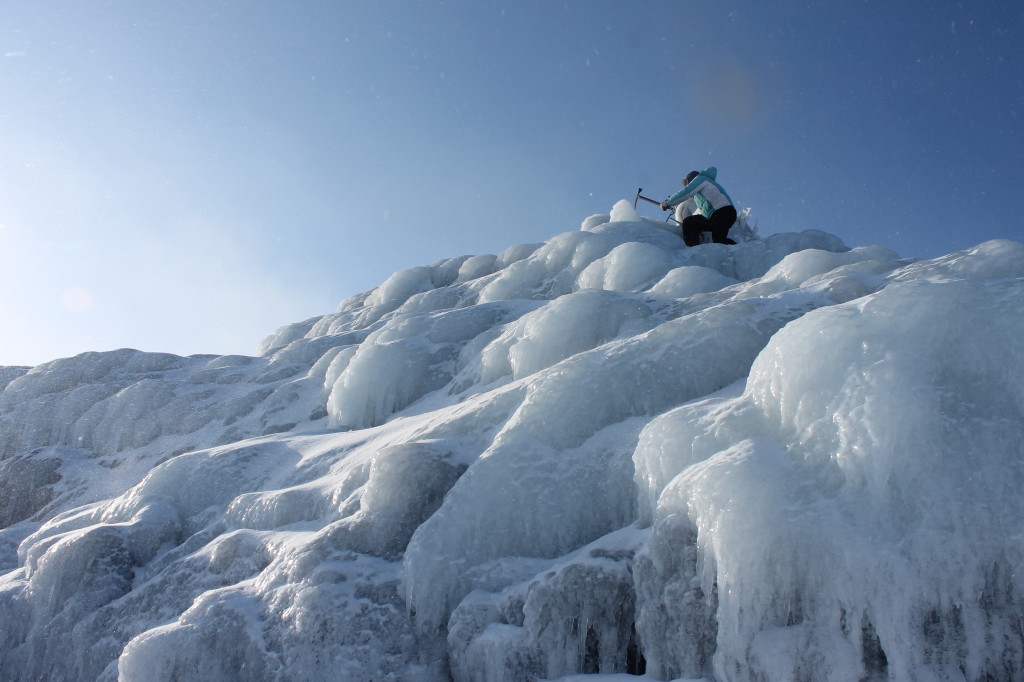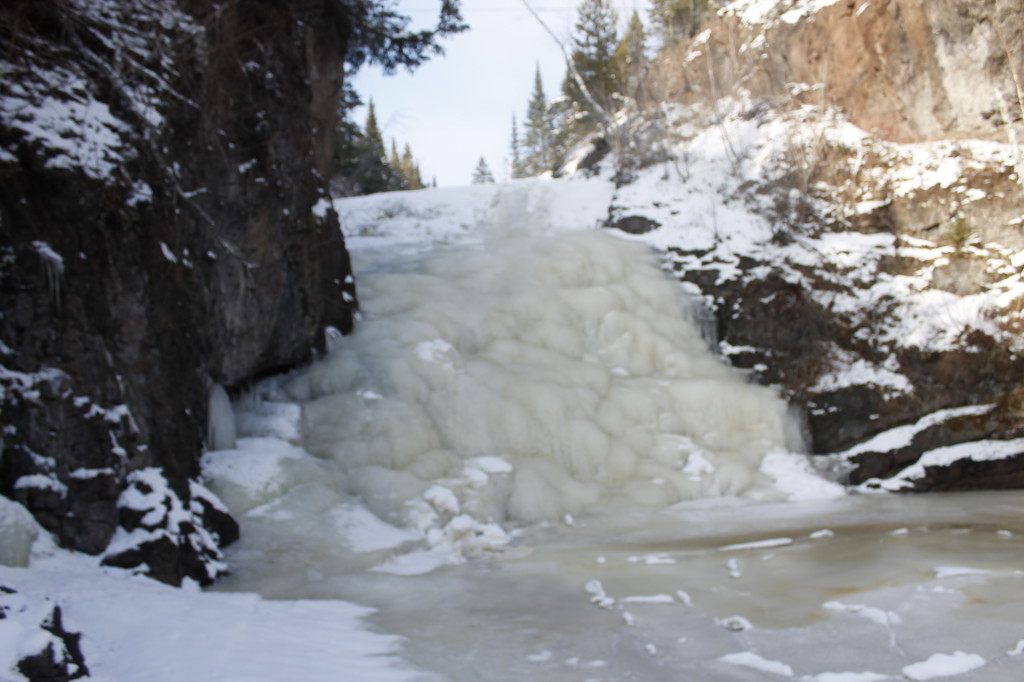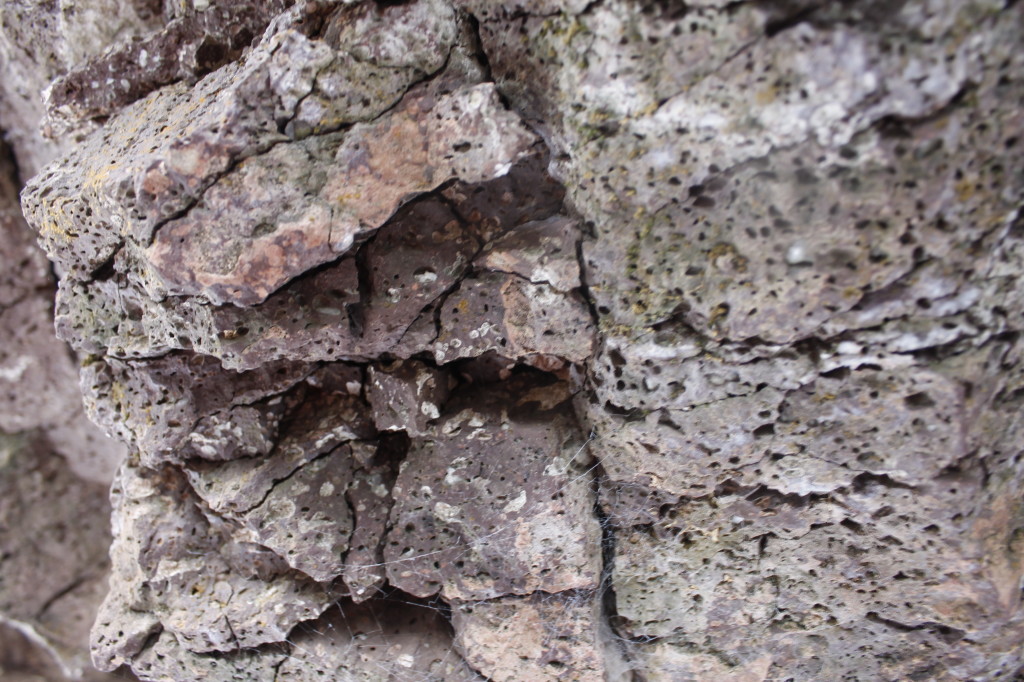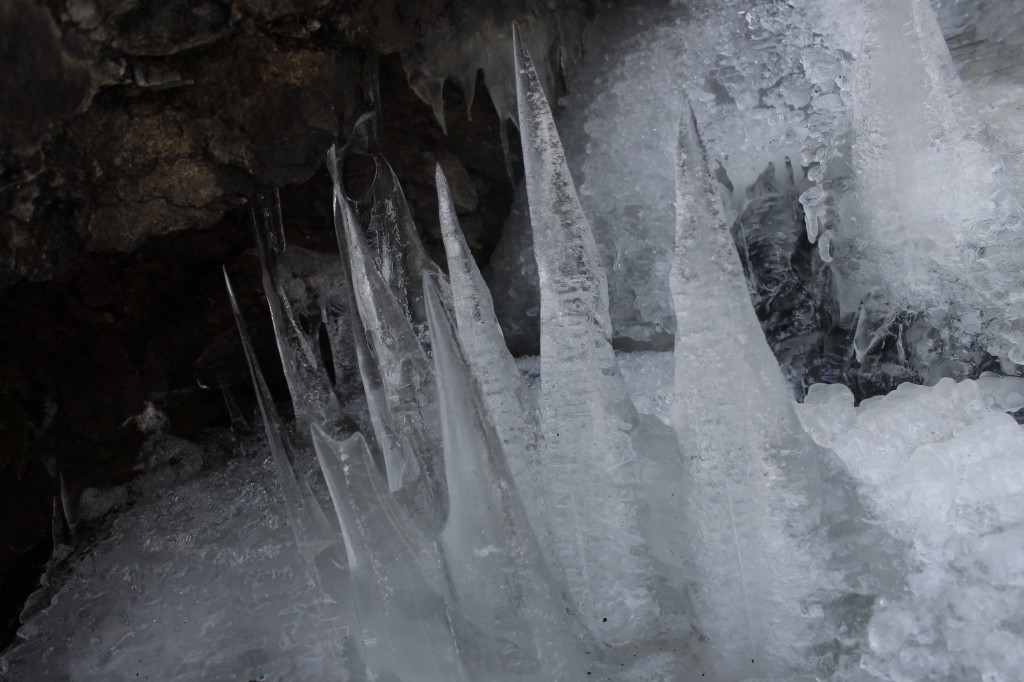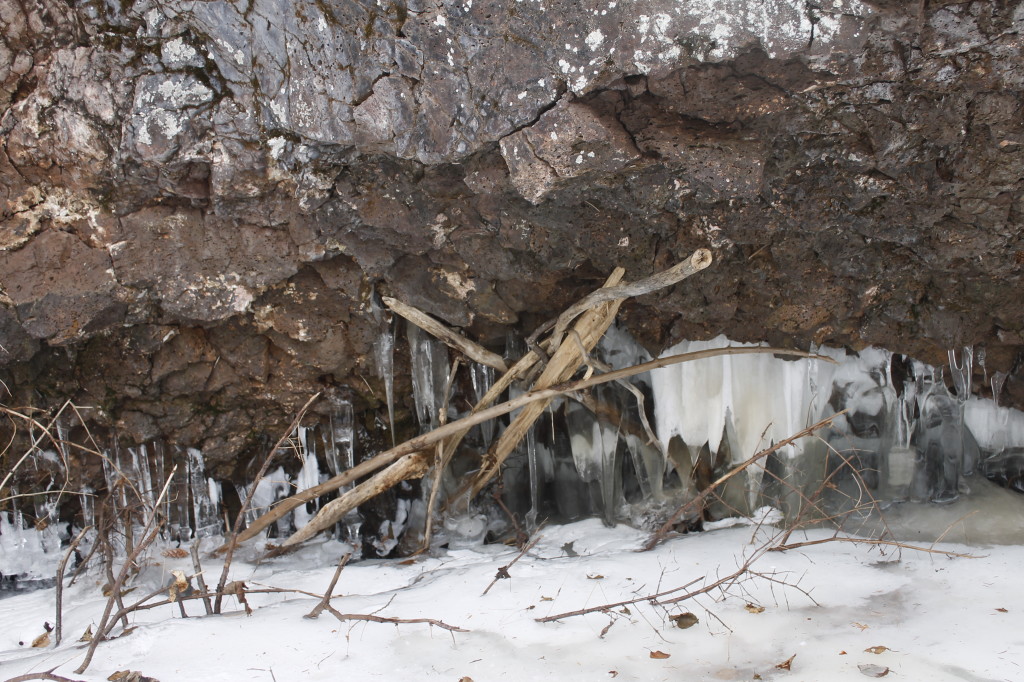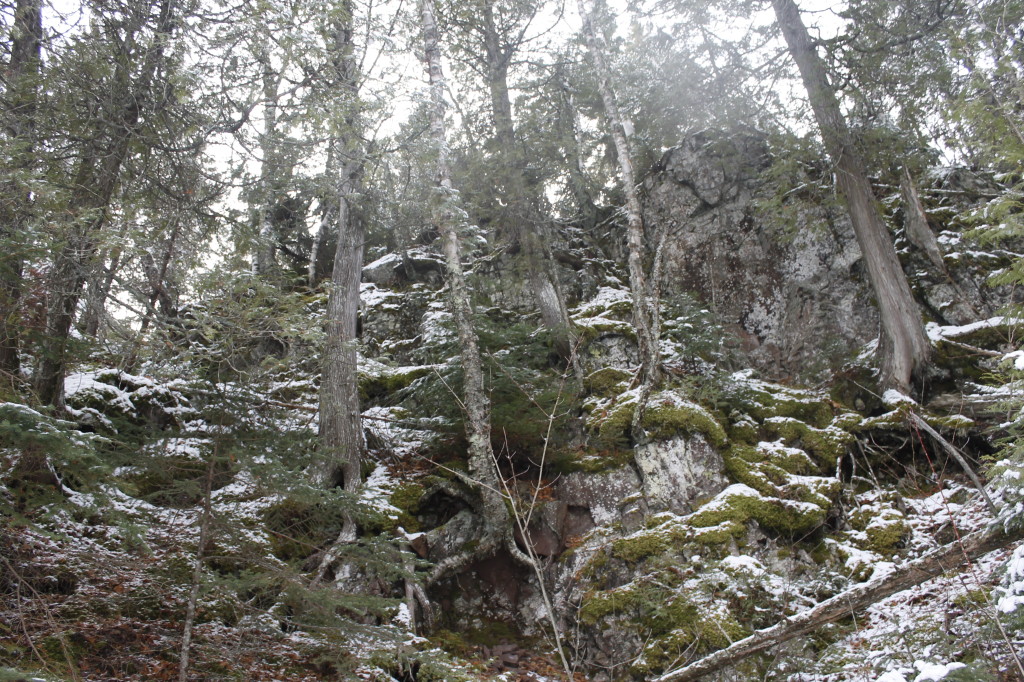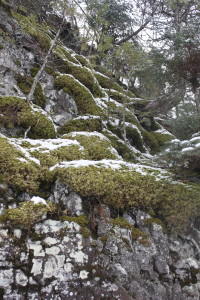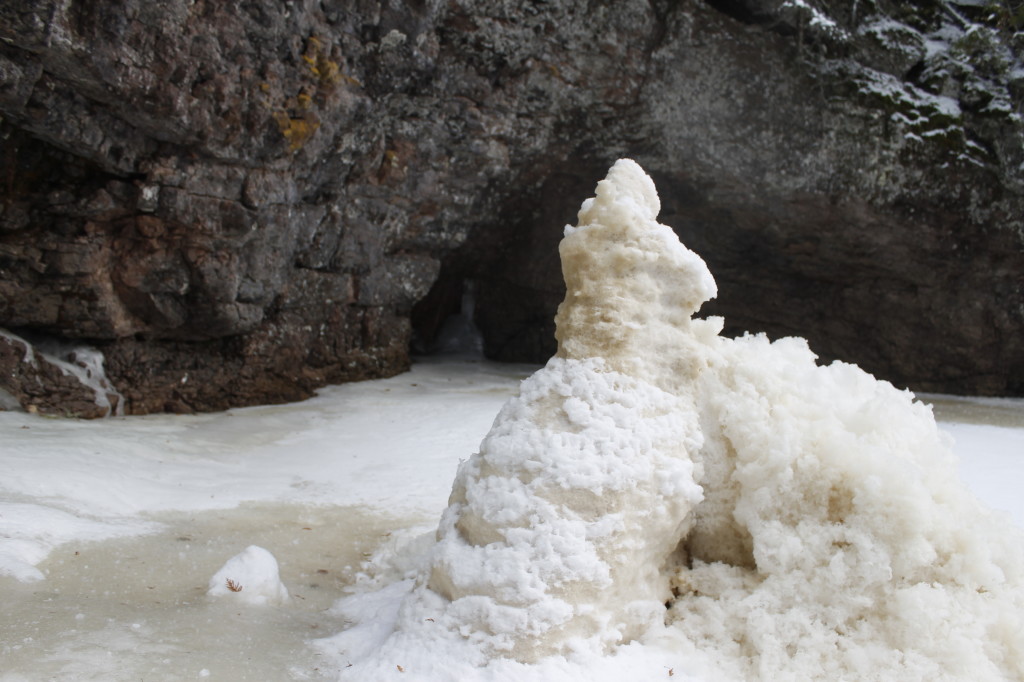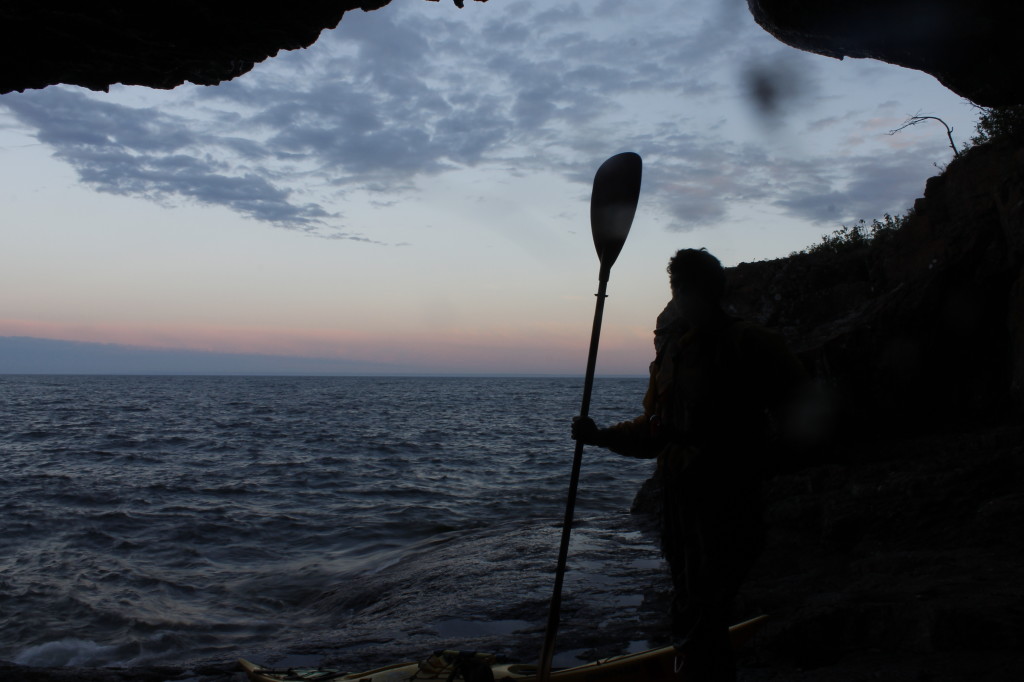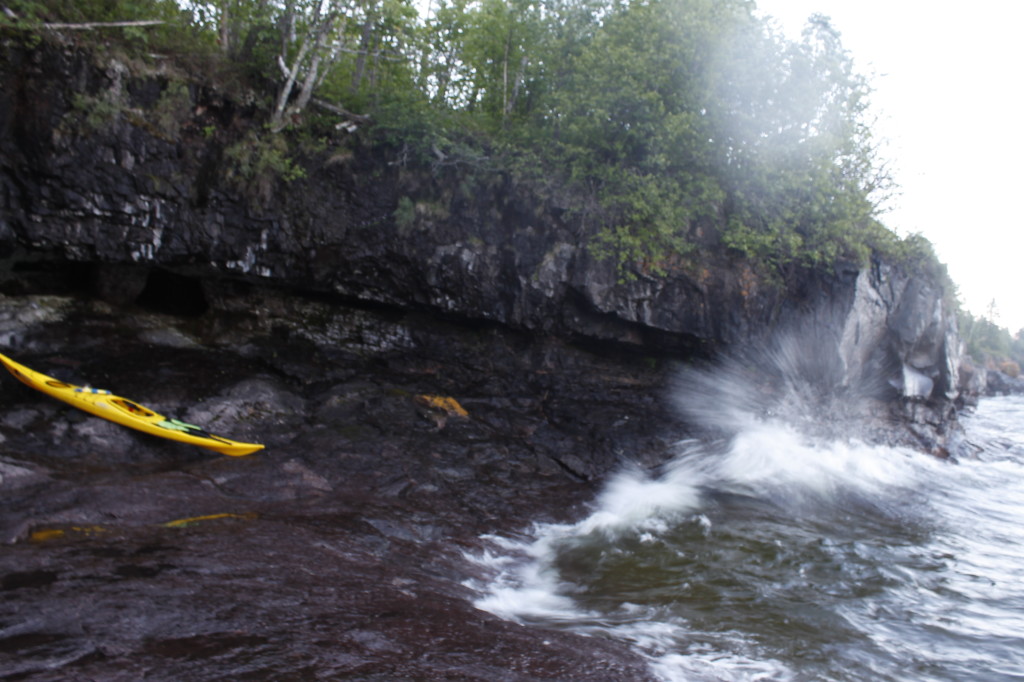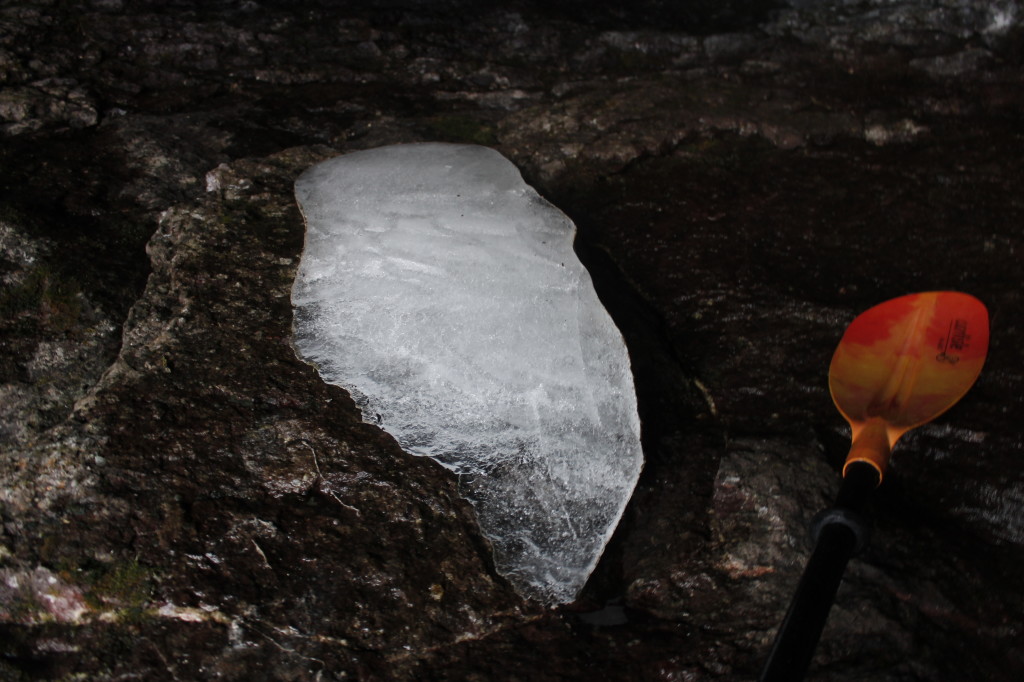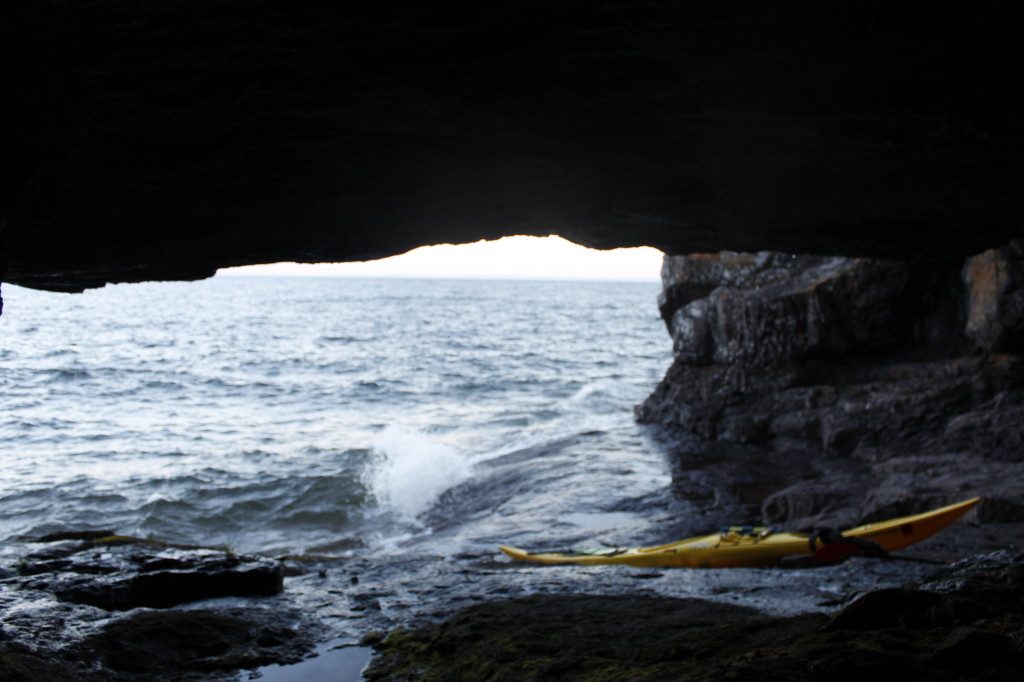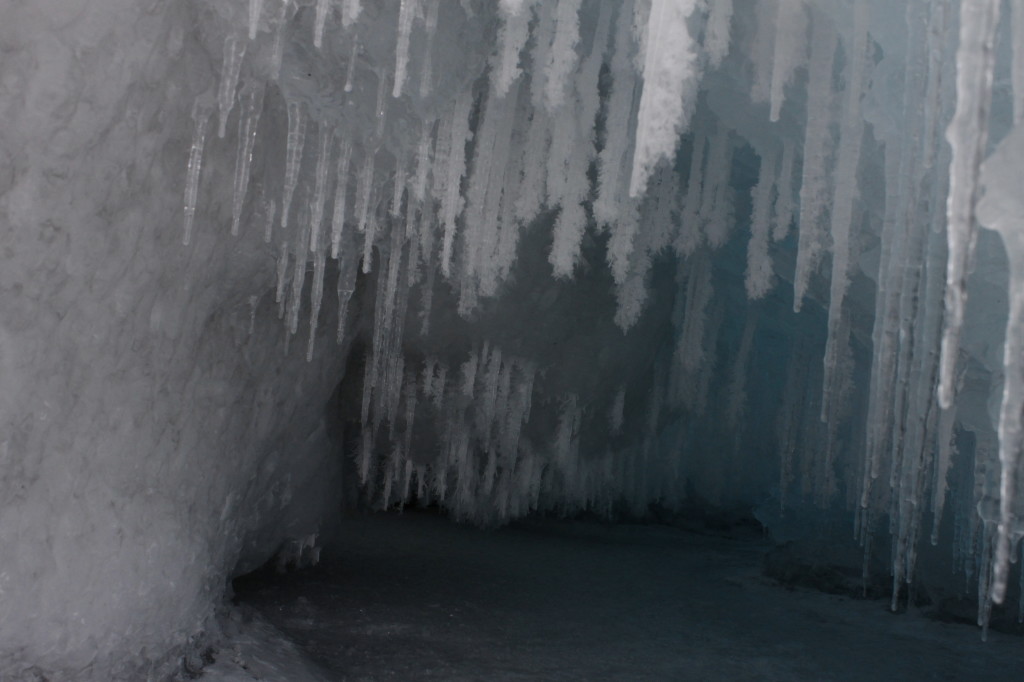
It’s important to stand in the right place, get the angle right.
Come over here and look this way, out over the miles of ice that stretch clear to the horizon. If you’re patient, you might see one of the snow devils, 15-feet high whirlwinds, silent and barely discernable against the clouds. It’s the closest thing to life that you’ll see out there — at least through squinting, sun-tormented eyes.
In the foreground, see how the wind has smashed the ice into itself, forming curious piles that flash iridescent blue from within. It’s beautiful, but reminds us of the treacherous nature of our location. Even now, we hear the occasional grinding of ice against ice and the loud “chunk” sound beneath our feet. Perhaps we shouldn’t stand here.
This ice has only been around for a few days. Before that, it was open water. Before it was open water, it was a field of ice much like the one we are standing on. The winds came out from the north and blew that ice over the horizon in one night. The open water looked deep blue and innocent, as if it had always been that way.
Turning back toward the mainland, a very different world comes into view. Now we see the rental units at the resort, where guests can take the in the drama of the Lake Superior ice from a cozy armchair, maybe a Jacuzzi.
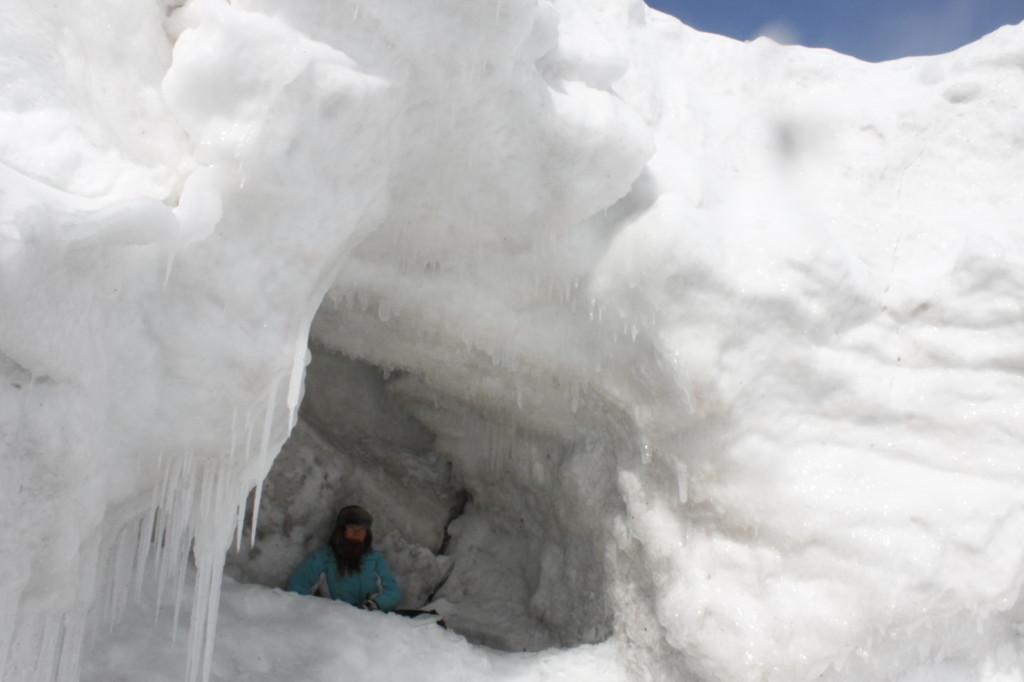
OK, so were not in Greenland. We won’t be sleeping in an igloo tonight. I’m thinking about renting a movie before we go back to my apartment with its hot running water and heated floor. I’m grateful for the conveniences at my back, but also glad that I can make them disappear if I look in the right direction.
The biggest ice walls are at least 12 feet high. They were born several weeks back when six-foot waves crashed up against a thin ice layer along the shore. The bay looked like a churning field of broken glass. When all those shattered pieces smashed up against the beach, the waves bulldozed them into massive piles. The freezing spray welded it all together and added more height to the already impressive heaps.
If we climb over those heaps to the other side, we can really make the shoreline disappear. Plus, there might be some cool caves and alcoves worth exploring. We should take these ice axes, firstly because ice axes are badass, but also because we can use them to tap the ice in front of us and see if anything is suspect. If one of us did fall through, an axe could be a useful self-rescue tool. Hopefully, this will not be necessary. I hope I’m not being an idiot.
I do want us to use the axes, but mainly to see if we can climb up a formation I call “The Blowhole.” When the waves were crashing in a couple weeks ago, spray had erupted through this opening in the ice like a miniature Old Faithful geyser. Now that the waves are gone, I’d like a shot at going up myself.
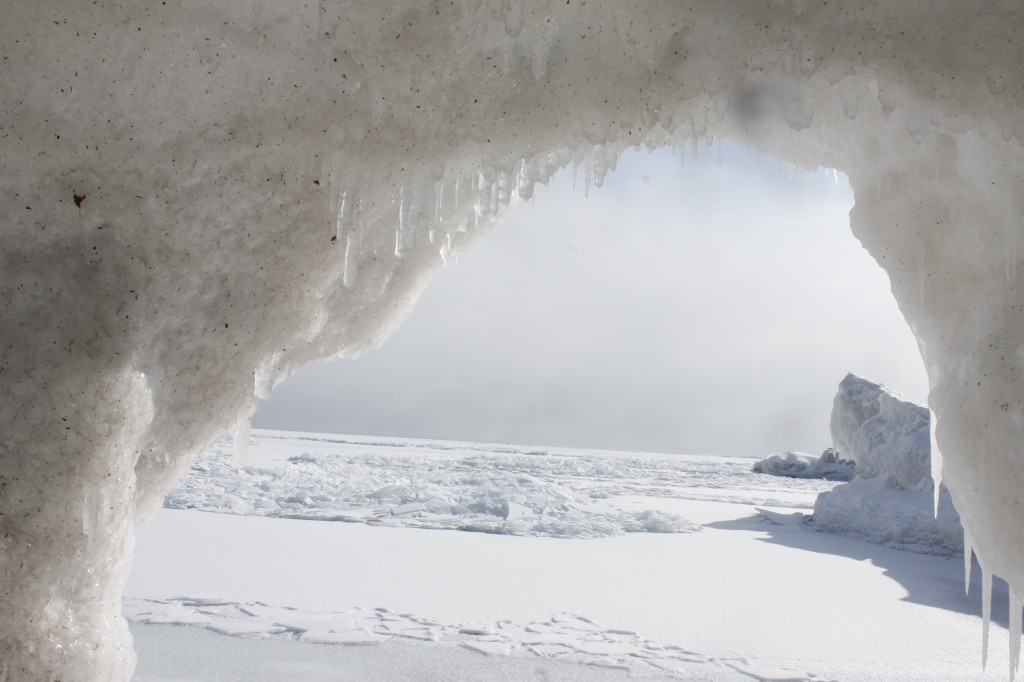
Before we get to the climb, however, there’s plenty of other cool stuff to check out, including all these caves. Right next to the dock I’d kayaked under in the summer (it’s completely caked in ice now) there is a small cavern barely tall enough to crawl through and even then I don’t go far because I don’t want to bring all the icicles on top of my head. What is really striking is the sapphire glow from within the ice. It reminds me of photographs of containment pools for depleted nuclear rods.
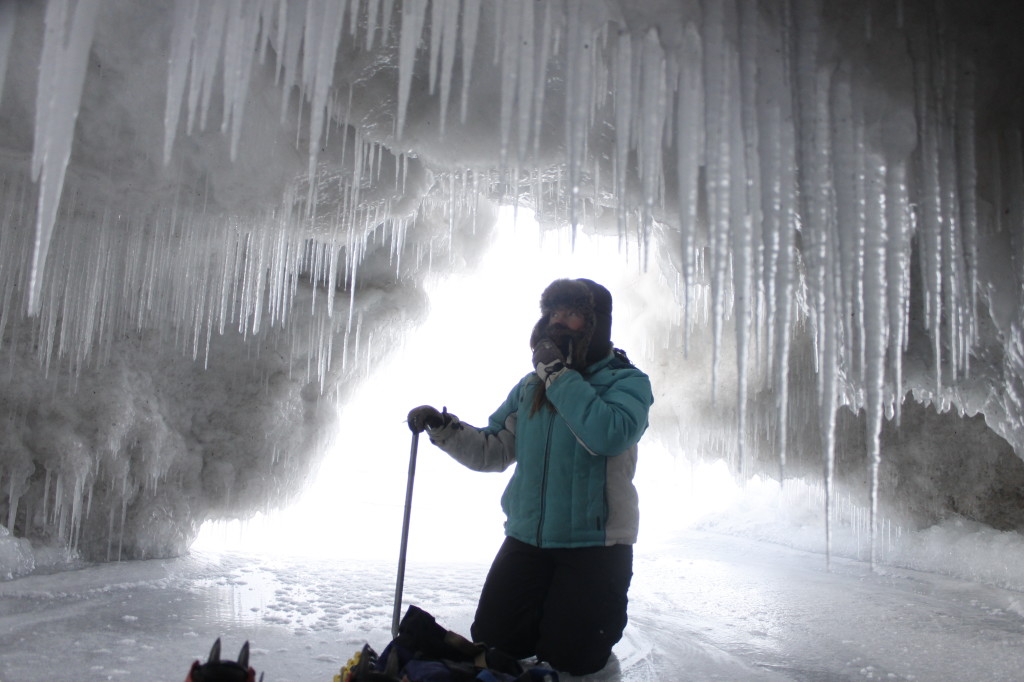
You whoop at the wild isolation of our locale. I’m glad you’re so adventurous and that you take so much joy in this simple outing. You climb up into alcoves for me to take pictures, taste the murderous-looking icicles above our heads.
Climbing up the blowhole won’t be so difficult, I realize, when I see it from the bottom. It starts as a gentle slope, and the fact that I will be ascending in a cylinder offers numerous holds for both axe tips and the crampon points. Nonetheless, I strap my crampons on and take both ice axes. It only takes me a few seconds to wriggle up and flop out onto the bright ice.
I come back around so that you can try it yourself. You elect to skip the crampons, and clamber up, no problem. Fine. I’ll skip the axes and climb out of there with crampons alone. I manage, though it takes some awkward footwork.
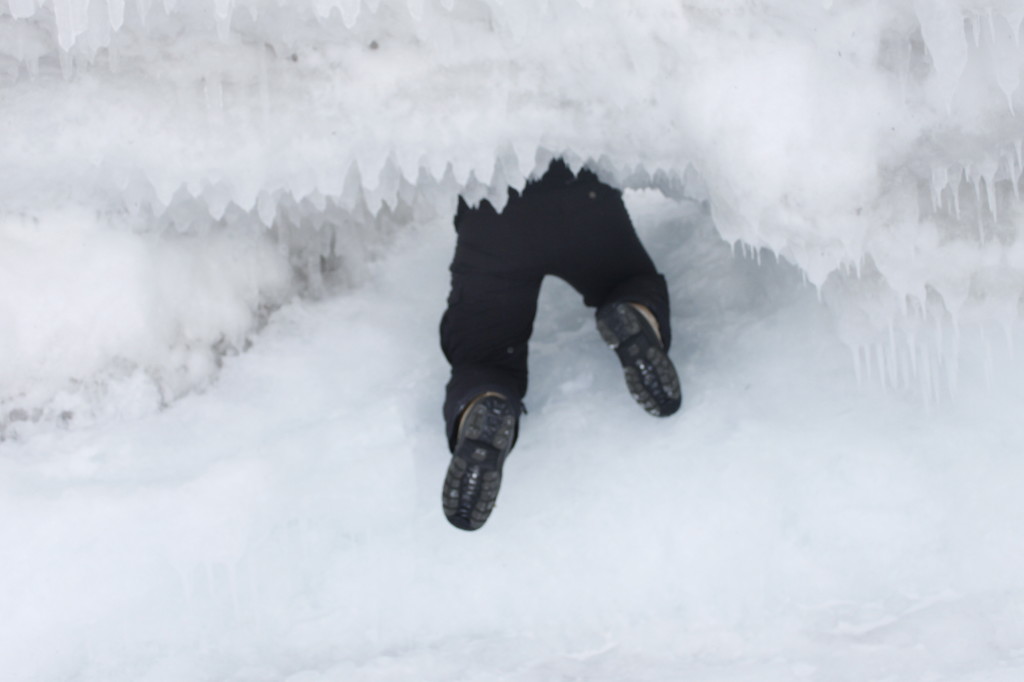
We spend another twenty minutes exploring the network of caves and alcoves. I try another climb above an overhang. It gets tough when I have no ice to sink my crampons into, and eventually I reach out and grab a knob of ice to pull myself up the last stretch. Eventually, we leave to drive to another point along the shore, which supposedly has some other impressive formations.
Indeed, when we arrive, there are several piles that look like shattered plate glass. Most are about six-inches thick and anywhere from a foot to seven feet long. It is possible to pick one up and look right through it like a window — or marvel at the tiny trails of bubbles in suspended animation.
You talk about building a fantastic see-through igloo. I’d be tempted to try if my feet weren’t so cold. There’s so much more to explore and do, but right now I’m getting cold as all hell.
We walk out to the far point, which is a defiant stone bulwark jutting out against the lake. The waves have absolutely pummeled this rock. It is about 25-teet tall and utterly draped with ice. 19th century traders traveling along the shore called this the “Sugarloaf” because the rock resembled one of the old sacks of sugar that they would have shipped up the coast. The white ice glaze certainly goes well with this name. Of course we have to climb it.
I’m too cold to put crampons on, so we go around to the easier sloping side. My jaw and other muscles are clenched tight against the cold. You seem to be doing just fine. It figures. You were raised near this latitude.
The wind howls from the other side of the stone. I make the first ascent, semi-clumsy with cold and eager to get back to the car before that tingling in my feet becomes frostbite. The wind smacks me head-on at the top, rips away at what little warmth I have left.
I beat a fast retreat, allowing myself to butt-slide on some of the gentler sections of ice. I hop from foot to foot as you make your own climb.
Perspective is everything again. From down here, the barren stone outcrop looks like it could be some oxygen-starved peak above the Tibetan highlands. It is easy to imagine the month-long trek, the thousands of feet of elevation gain, lost toes and fluid in the lungs — all for the chance to stand on some godforsaken rock. I say that as someone who loves to climb thousands of feet to stand on godforsaken rocks. It was one of the things that I worried about when I moved to Minnesota, with its shrimpy mountains. But latitude has a way of making up for altitude. Here, we can have our rock within a 25-foot climb. The miles of tortured ice are a bonus. Also, I have someone to enjoy it with.
You reach the summit; raise the axes in a war whoop. It might as well be the top of the world.
